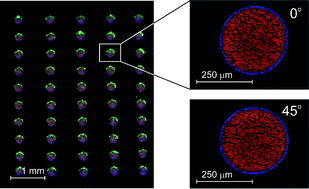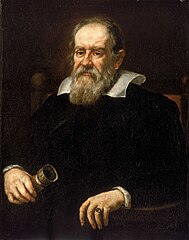A team of researchers at Cambridge used liquid crystals in place of standard printer ink to print tiny dots on a surface covered with a special coating [1]. When the coating dried, the dots on the surface become lasers.
This is the first time that anyone has been able to print lasers and opens up a host of potential applications. Including various displays, lighting effects and motion sensors.

Image courtesy of the University of Cambridge.
Lasers
A laser is a device that emits light of a high degree of spatial and temporal coherence (i.e. “very uniform”) via a process of optical amplification based on the stimulated emission. This process was predicted by Einstein and is a direct consequence of quantum mechanics. Laser is an acronym for “light amplification by stimulated emission of radiation”.
Stimulated Emission
One of the important consequences of quantum mechanics is that electrons surrounding an atom of molecule can only sit in specified discrete energy levels. Electrons can jump up to excited states (if they are free) by the absorption of a photon. Similarly, an electron in an excited state can fall back into a lower energy state by the emission of photon. Note that such transitions are necessarily between the discrete energy levels. This leads to the phenomena of spectral lines.

An electron in an excited state will not sit there forever. An electron in an excited state will decay to a lower energy state, which is not occupied by another electron, after some time which characterises that particular transition. This is known as “spontaneous emission”. The phase associated with the photon that is emitted is random and the radiation is emitted in all directions. For example, florescence and thermal emission are of this kind.
An external photon with the energy associated with a transition can affect the quantum mechanical state of electrons. In particular the probability of the electron making a transition is greatly increased. The rate of transitions between two states is can be much greater than that due to spontaneous emission. A transition from a higher to a lower energy state, produces two photon; this is the process of “stimulated emission”.
The key point is that the photons generated by stimulated emission is almost the same as the input photons in terms of wavelength, phase, and polarisation. This gives laser light its rather uniform properties, including direction of emission.
References
[1] D. J. Gardiner , W.-K. Hsiao , S. M. Morris , P. J. W. Hands , T. D. Wilkinson , I. M. Hutchings and H. J. Coles. Printed photonic arrays from self-organized chiral nematic liquid crystals. Soft Matter, 2012, Advance Article DOI: 10.1039/C2SM26479J


